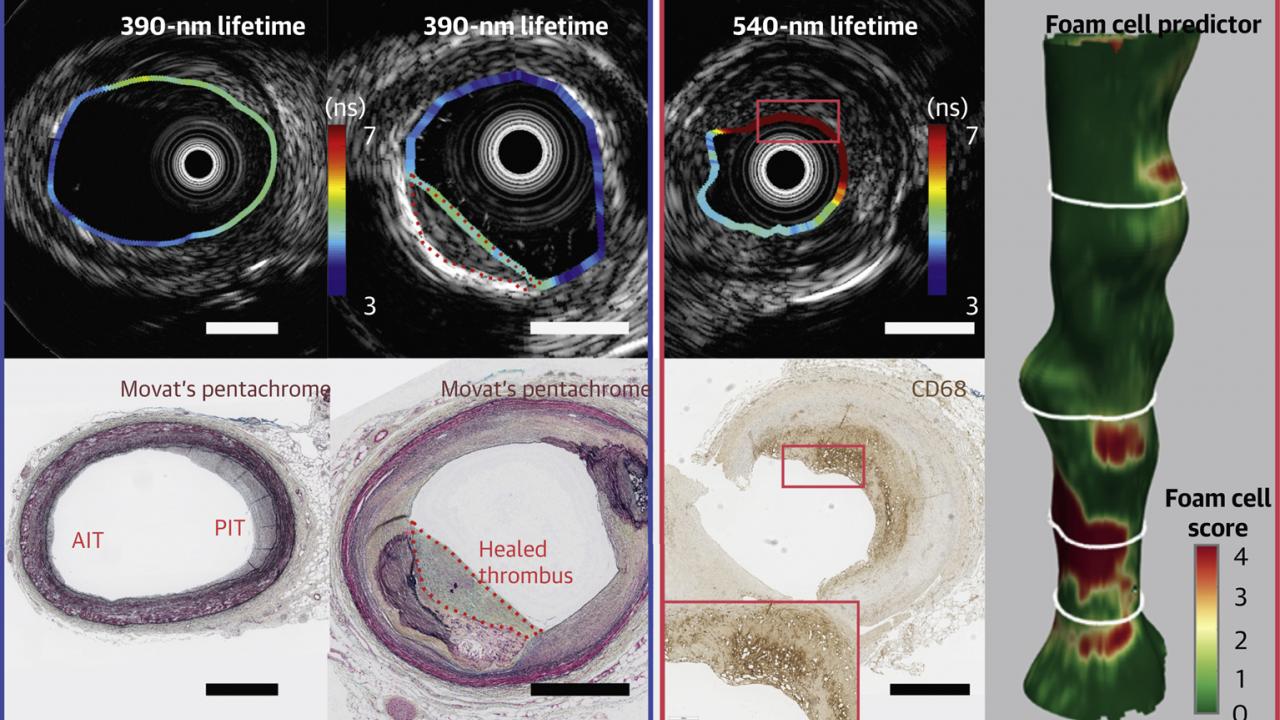
Using Fluorescence Lifetime Imaging to Understand Coronary Artery Disease
Cardiovascular disease, particularly ischemic heart disease and stroke, is the leading cause of death worldwide and a large contributor to disability and rising health care costs. As such, it is the focus of intense research.
Scientists in the Department of Biomedical Engineering department at UC Davis recently concluded a study, published in the Journal of American College of Cardiology: Cardiovascular Imaging that highlights how fluorescence lifetime imaging (FLIm) can be used to identify key phenomena linked with coronary plaque progression.
Laura Marcu and colleagues are developing Fluorescence Lifetime Imaging (FLIm) as a new way to image signs of damage to blood vessels, such as plaques and foam cells, in heart disease.
Laura Marcu, professor of biomedical engineering, along with researchers in her lab found that fluorescence lifetime imaging signatures from different spectral bands can be used to quantitatively predict the superficial presence of macrophage foam cells and extracellular lipid content in coronary artery lesions, detect superficial calcium, and possibly detect lesions consistent with active plaque formation and progression.
“These findings pave the way for a better understanding of critical pathobiological processes in patients, optimization of intracoronary interventions for patients with coronary artery disease, and ultimately save lives,” Marcu said.
New tools for clinical imaging
This work builds on the Marcu Lab’s earlier efforts to develop novel imaging catheters able to address shortcomings in analytic tools and imaging technologies currently available. These have limited capabilities for evaluating in situ biochemical changes associated with luminal surface features. The novel instrumentation under development at UC Davis aims to provide researchers and clinicians with additional capabilities to address imaging needs in clinical settings as well as the development of new pharmacotherapies.
“As engineers, researching major health issues like atherosclerosis by developing novel imaging devices that are able to visualize previously unseen biochemical features of coronary lesions is very rewarding,” said Julien Bec, one of the researchers who worked on the project.
The study involved close collaboration between biomedical engineers at UC Davis and cardiovascular pathologists from the Texas Heart Institute, and was funded by the National Heart, Lung, and Blood Institute.
The Marcu Lab researchers plan to continue building on this research as they get closer to clinical translation and in vivo studies which will be key for clinical adoption.
More information
Label-Free Visualization and Quantification of Biochemical Markers of Atherosclerotic Plaque Progression Using Intravascular Fluorescence Lifetime (JACC: Cardiovascular Imaging)
New Cardiac Catheter Combines Light and Ultrasound to Measure Plaques (Egghead)
